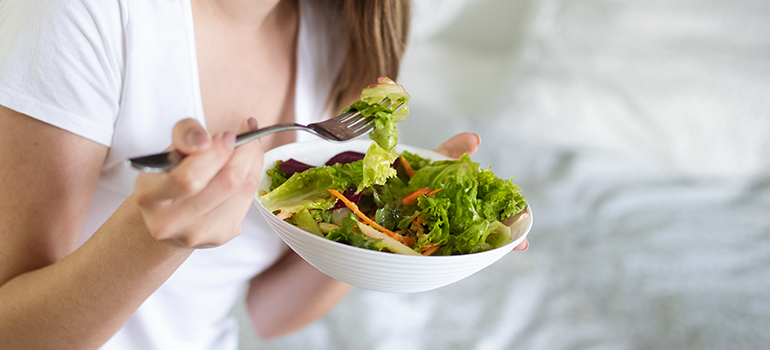Truth: dieting is hard. It’s no secret that proper nutrition is a key component to any successful weight loss journey. But…diet, sigh. Hearing the word diet typically cues thoughts of restriction, followed by anxiety. If you’re serious about your weight loss journey – but the thought of giving up all of your favorite foods makes you want to run far, far away – the macro diet may be for you.
Contrary to prior belief, counting macros is no longer just for athletes and bodybuilders. The IIFYM diet, or “If It Fits in Your Macros” diet has gained popularity due to its flexibility and freedom of choice. Counting macros is fairly simple, but like anything new, it can be confusing at the beginning. Read on to learn more about the benefits of a macro based diet, how to count your macros, and tips to help you be successful with the macro diet.
What are macros?
The foods you eat contain nutrients that give your body energy. These nutrients are categorized as macronutrients and micronutrients. Micronutrients are the vitamins and minerals found in the food you eat. Your body only needs micronutrients in small amounts. Macronutrients, on the other hand, are the three types of nutrients that give your body the most energy: carbohydrates, protein, and fat. It is important to remember that not all macronutrients are created equal. For example, when choosing a carbohydrate option, a bowl of oatmeal would be a healthier choice than a donut. Below are some examples of healthy choices in each macronutrient category to help you get started:
- Carbohydrates: leafy greens, whole grains
- Proteins: lean red meat, poultry, white fish, eggs
- Fats: olive oil, avocado, almonds, almond butter

Calculating and Counting Macros
When having conversations with my clients regarding their nutrition, they often ask how to count macros. Macronutrient ratios are not one-size-fits-all and can be customized to support any fitness goal. Successfully counting your macros starts with determining your macronutrient ratio. These numbers depend on several factors including your goals, age, and activity level. A sedentary female with a goal to lose fat will have a different macronutrient ratio than a highly active female with similar goals. When starting a macro-based diet, the following ratios are a good place to start:
- If you exercise an hour or less daily: 30% protein, 40% carbohydrates, 30% fat.
- If you exercise for one to two hours daily: 30% protein, 45%carbs, 25% fat.
- If you exercise for more than two hours daily: Consult a certified sports dietician. Higher physical output requires more personalization and monitoring for safe weight loss.
Now that you know which macronutrient ratio works best for your activity level, you can figure out the actual number of macros you need in grams and keep track of them in three easy steps:
- Determine how many calories you need to eat daily. Similar to figuring out your macronutrient ratios, determining your daily caloric needs requires data such as your age, weight and activity level. Use an online calculator to help you find your calorie sweet spot no matter what your goal.
- Add up your macros. Now that you’re armed with your daily calorie count, it’s time to figure out exactly how many grams of protein, carbohydrates, and fat you need to consume on a daily basis. What?! More math?? Thankfully, there’s a calculator for everything. With the help of the internet, we were able to determine that a female eating 1500 calories daily and is lightly active (exercises an hour or less daily) would need 112g protein, 150g carbohydrates, and 50g fat to meet her weight loss goals at 2 lbs/week.
- Use an app to track your customized macros. Now that you have your macronutrient needs down to a science, you will need to keep track of your daily intake of protein, carbs, and fat. Food tracker apps make counting macros quick and simple. My favorite is MyFitnessPal. Not only does it make tracking easy with its barcode scan feature, but it’s also available for both Android and iPhone.
This sounds complicated. Is it really worth all the hype?
As I mentioned earlier, macro-based diets such as IIFYM gained in popularity due to the belief that you can eat anything as long as it fits into your specific macronutrient ratios. While the ability to have “cheat meals” every day may not stall your weight loss progress, it is not good for your overall health. Processed foods high in sugar and fats heighten the risk for diabetes and heart disease. If you choose to follow a macro-based diet, it is recommended to choose the healthiest possible option for each macronutrient category. Doing so will not only help accelerate your weight loss goals but will also support your overall health for years to come. Bottom line, if restrictive diets never last long for you and you’ve got the “I’ll start next Monday” blues – the freedom of choice that counting macros provides is definitely worth the effort!
Sound great, but still too much to track? What if I told you that you could still get the benefits of the macro diet without all the counting and tracking? The LadyBoss® Pocket Personal Trainer offers an amazing way to maintain the same flexibility in your diet that the macro diet offers, but with no counting or tracking what-so-ever! If you want to start paying attention to your macros but aren’t ready to commit to an IIFYM lifestyle, the LadyBoss® FREE 7 Day Experience is a perfect option for you.






















